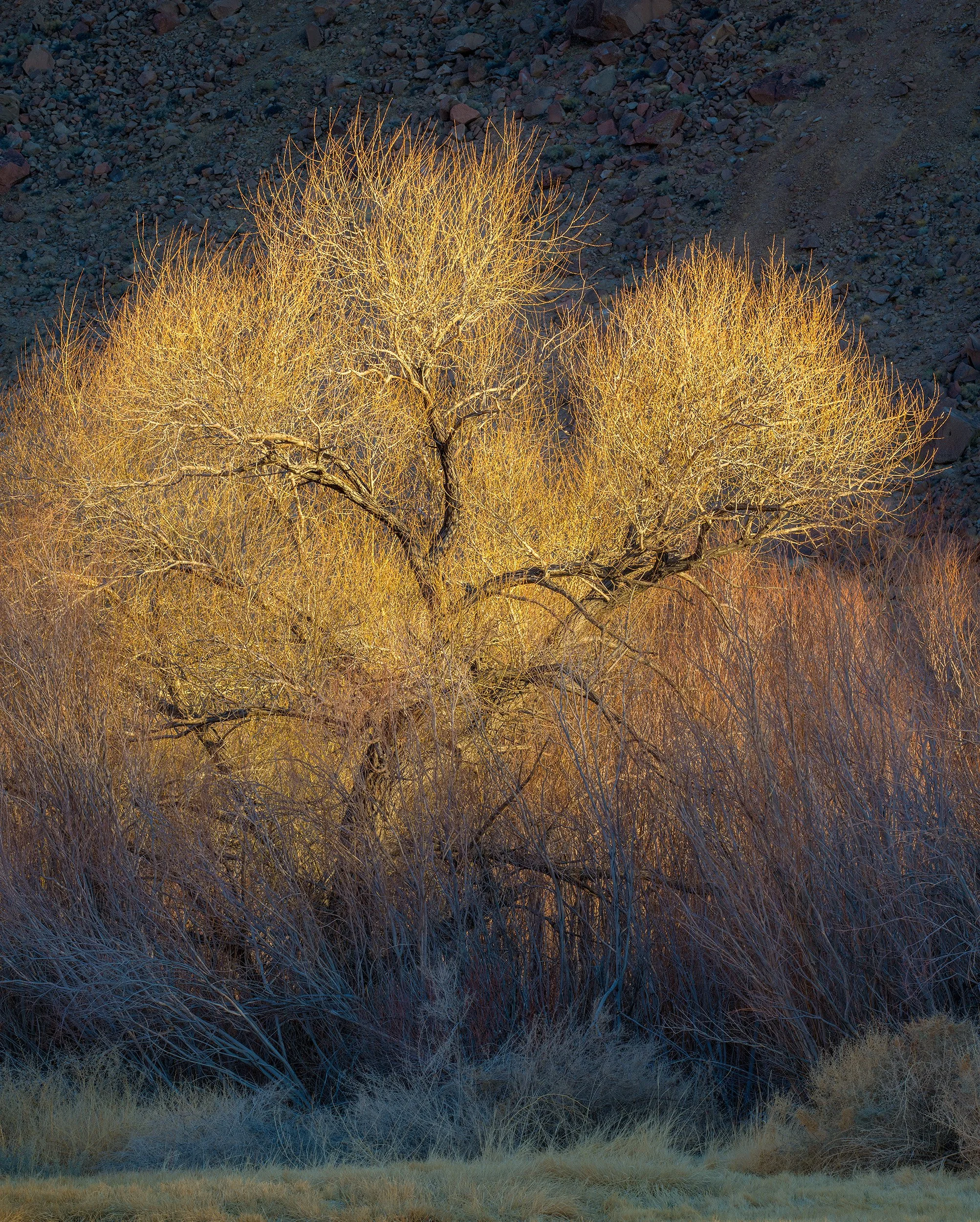Pursuing the perfect print
Computers are great, but Scott considers the fine print the final stage of his journey. There’s just something real about holding a well-made print in your hands or viewing it framed on the wall…It’s a craft, not Costco.
Scott’s film-based images start with traditional color transparency film—in most cases, 4x5 inch Fujichrome. But then things turn digital: each sheet of film is drum-scanned and converted to a 600-mb, 16-bit computer file and dodged, burned, and color-balanced by Scott on a souped-up Macintosh.
Digital captures are shot as high-res RAW files, so they bypass the scanning stage and go straight to Lightroom and Photoshop for all color-correction and tweaking. Then it’s on to proofing and proofing again…
Whether film or digital, these master files are then targeted and sized and sent to a Canon 12-ink printer with archival pigment inks and are output onto one of several very special fine-art papers. Scott especially likes Canson Platine Fibre Rag, a balanced and beautiful semi-gloss paper from one of Europe’s oldest paper makers. He also uses Epson Legacy Fiber, Hahnemuhle Fine Art Baryta Satin, and Hahnemuhle German Etching. These are all the best of the best.
We don’t do “limited” editions. Instead, since Scott makes each print individually to order, the output will inherently be limited. When re-printing, he almost always takes the opportunity to revisit his earlier work and see if he can make it even better.
Whether it’s processing, proofing, printing, or re-printing, no time or expense is spared—and that’s the point.
Finishing touches
Scott’s standard print sizes range from roughly 9x12 inches up to 24x30. He makes larger prints, too, depending on the particular image. He feels that drum-scanned film images are still the best for the largest output sizes, but…
Prints up to 20x24 are hinge-mounted on archival foamboard backing, then overmatted with either 4-ply or 8-ply Rising Museum board. (They can also be purchased unmounted.) Larger prints are shipped unmounted and rolled only.
Scott also sometimes builds frames from scratch, using rough lumber he first mills and shapes, then assembles and finishes with hand-rubbed varnish and beeswax. He especially likes “local” hardwoods like bay laurel, madrone, and claro or California walnut. Sugar pine is nice, too.
Be aware that the final size of the piece itself—when matted—is bigger than the image size itself. For example, a printed horizontal image that’s 15 inches high by, let’s say, 19 inches wide, will actually measure 22 x 28 when matted. That’s the frame size—and the wall space—you’ll need, too. We try to keep these mat sizes consistent and in “popular” dimensions so you can find a stock frame that fits—if that’s your choice. It also helps if you’re planning to “gang” a number of prints together in a matching set.
Got questions? Drop us a line and we’ll be happy to discuss your options.


